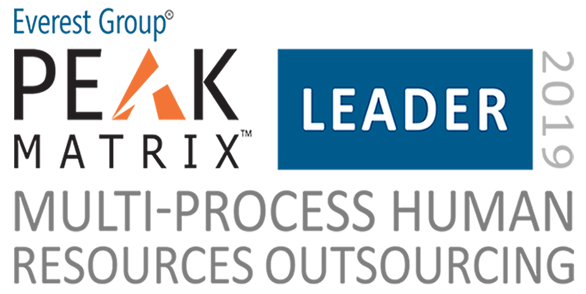
The human resources game has changed.
The rise of social and digital media has reinvented how people work, form opinions, perform tasks, seek support and give feedback.
Now that employees are more connected and empowered than ever before, their expectations have evolved and increased. Expectations such as personalised and relevant human resource messages, transparency within the organisation, and real-time feedback and issue resolution.
All of these are direct by-products of our hyper-connected world. For HR teams, this means employee engagement is more complex than ever before. To survive and thrive in our digitally disrupted, employee-driven world, HR must also undergo a transformation – and forward-thinking leaders like you have an opportunity to be ahead of the game.
Human resources transformation demands more from HR leaders; more accountability, more discipline, and more integration.
It requires HR leaders to abandon the traditional process-first approach and become unapologetically employee-centric. It requires executives, their teams, and their leaders to put aside conventional wisdom and shift the focus to social and digital.
In a new era in which human resources is about experience and employee perception, both critical to an organisation’s success or failure, accomplishment will rely on the ability to create and deliver human and intuitive experiences – at scale.
Unifying your teams, processes, point solutions and technology under a complete, integrated, and collaborative system can not only help people managers and their enterprises survive in the current landscape, but push them forward.
The roles and responsibilities of the modern HR leader are rapidly evolving. In the past, the HR leader was essentially the keeper of internal communications – the one in charge of formulating the company messages and distributing them through email memos. But that’s now changing dramatically – social media has diluted this relationship and empowered employees in previously unimaginable ways.
Today, however, HR leaders wield more power than ever.
Most HR leaders see their role as increasingly influential to business success. And, as the old adage goes, with great power comes great responsibility.
Six roles to master
The prospect of abandoning the familiar and facing new challenges can be daunting. Helpfully, however, the most vital emerging areas of expertise can be broken down into six tasks. Think of these distinct yet overlapping roles as the reliable path for forward-looking HR leaders to represent employees and drive growth.
1.The Employee Experience Conductor
When employees work in their daily environment, their experiences are influenced by a multitude of elements: the functionality of their systems, the resources they’re given, information, responsiveness of other employees, and even the physical surroundings and set-up. What employees ultimately feel, and choose to express, about these different experiences now impacts every facet of a business.
Yet, while all departments – from employee care to product development – now bear some direct responsibility for employee experience, the existing management structure of most companies means no single executive owns it. In fact, few organizations have an executive dedicated to employee experience.
This needs to change, quickly, and no one is better positioned to take up the mantle than the HR leader. By wholeheartedly taking ownership of employee experience, HR leaders can position themselves to spur alignment throughout all employee-facing functions.
2. The Insights Generator
Insights are fuel for innovation, growth, and sustainability. In the social age, some of the most valuable insights come from observing employee interactions online. Savvy HR leaders are creating communication paths across different mechanisms, such as social, and then converting that information into insights that drive growth.
When these insights are fed to other functions, employee feedback can dramatically improve products and operational processes, while elevating employee service. By taking the reins of this process and embracing the role of ‘insights generator’, HR leaders can transform the connection between the people in the organisation and the business you’re in.
3. The Growth Catalyst
The greatest insights lead directly to growth. Where once HR leaders might have simply taken pride in identifying a growth opportunity and passing the idea to someone else, today they are taking ownership.
So how does a HR leader embrace and embody the role of ‘growth catalyst’? Unifying teams is a critical step. In many organizational structures, colleagues tasked with listening to employees or generating an environment of insights are disconnected from those who run the business. As a result, employee insights don’t always get translated into major growth-driving actions. The enemy is separation.
Once a potential growth opportunity is identified, commit. Smart HR leaders are giving themselves permission to act on fresh ideas. And because employees represent uniquely fertile soil for innovative insights, top HR leaders are investing in an integrated HCM platform to coordinate employee engagement and facilitate cross-team collaboration, ensuring that big new ideas don’t fall through the cracks of disconnected systems.
4. The Organisation Steward
Any employee, at any time, can post a negative comment about an organisation. As natural organisation stewards, HR leaders have a responsibility to create effective, protections against such attacks and move swiftly to mode damage control.
The very best way to defend against attacks and remedy their impact, however, is to identify, cultivate, and rally loyal organisation advocates.
Employees typically fall into one of three categories: advocates with strong organisation affinity, detractors with some decided degree of dislike, and the rest who are generally ambivalent. While it’s always advantageous to convert detractors or connect with new employees, the most efficient investment is to nurture loyal advocates. They represent an organisation’s most dependable and potent asset in the collective conversation. Even a single inspired and motivated advocate can wield tangible impact.
5. The Human Resources Communicator
The HR leader’s responsibility for leading human resources communications has grown strikingly more complex. Given the mighty task of effectively communicating, today’s HR leader needs tools that can adeptly leverage their efforts.
Successfully managing this new ‘human resources communicator’ role simply isn’t feasible anymore without an integrated platform that makes it possible to engage with employees on Facebook, Twitter, LinkedIn, and other key social channels, in a single framework. Imagine the difficulty of managing phone lines in the earliest days of the telephone without a switchboard!
Ideally, HR leaders need to empower themselves with a communication platform that also connects seamlessly to existing employee-facing systems, like email, so that all employees benefit from a consistent and compellingly unified voice.
6. The Talent Incubator
If the digital world demands new skills and capabilities from HR leaders, it also requires new functions, roles, and responsibilities in the human resources organisation. These include roles like data scientists, content directors, and ecosystem managers. Given the complexity and unprecedented nature of these tasks, the HR leader needs to play a strong role in hiring, training, and developing talent within the organisation.
This necessitates that HR leaders develop their own digital acumen. They must take a hard look at their abilities in data, analytics, and automation and seek out opportunities to further develop technical fluency and expertise. In doing so, they will be better equipped to seek candidates with optimum skill sets and to provide the right training for current employees.
To succeed, HR leaders need to master these six competencies. Doing so will create a strong foundation for human resources transformation within your organisation.


